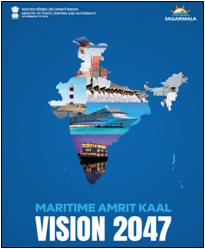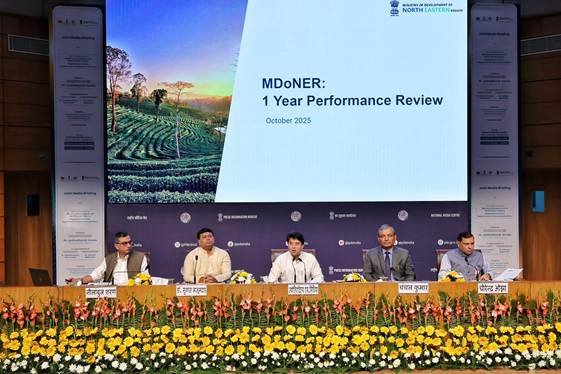Maritime India Vision 2030 for sustainable growth
India’s maritime sector is entering a decisive decade, with new laws, mega projects, and global investment ambitions shaping the Maritime India Vision 2030, according to a document released by the Press Information Bureau (PIB) on 26 Oct.
With a strong focus on green technologies and digital innovation, India is preparing to not only meet its trade demands but also emerge as a maritime leader.
Building onto this foundation is the Maritime Amrit Kaal Vision 2047, a long-term roadmap for India’s maritime resurgence, with investments of nearly Rs.80 lakh crore earmarked for ports, coastal shipping, inland waterways, shipbuilding, and green shipping initiatives https://www.conexpoconagg.com/.
The government is driving sustainable maritime operations by setting up green corridors, introducing green hydrogen bunkering at major ports, and promoting the use of methanol-fueled vessels.
Outlining more than 300 actionable initiatives, the Ministry projects India’s rise as one of the world’s top maritime and shipbuilding powers by the centenary of independence http://shipmin.gov.in.
The momentum of this vision has been carried forward through landmark initiatives that are reshaping India’s maritime landscape.
A historic milestone in this journey was achieved in September 2025 during the “Samudra Se Samriddhi – Transforming India’s Maritime Sector” event where 27 Memoranda of Understanding (MoUs) were exchanged, unlocking investment potential of over Rs.66,000 crore and paving the way for more than 1.5 lakh jobs https://www.nseindia.com/.
The agreements spanned port infrastructure, shipping, shipbuilding, sustainable mobility, finance, and heritage, reflecting India’s integrated vision for becoming a global maritime and shipbuilding hub.
Notable projects included Greenfield Port at Bahuda in Odisha with 150 million tonnes per annum (MTPA) capacity at an expected investment of around Rs.21,500 crore, Water Metro Project in Patna using electric ferries valued at around Rs.908 crore, and a strategic Vessel Owning Joint Venture Company between Shipping Corporation of India (SCI) and Oil Public Sector Undertakings (PSUs) to reduce foreign fleet dependence and boost Indian-built ships https://www.bseindia.com/.
Alongside this, shipbuilding MoUs across five states, major shipyard investments, financing tie-ups, and a Rs.266 crore lighthouse museum at the National Maritime Heritage Complex in Lothal, Gujarat further reinforce India’s vision to rank among the world’s top shipbuilding nations by 2047, said PIB https://sbi.com.in/.
Under the New Mangalore Port Authority (NMPA), eight significant maritime development projects have been launched recently, including construction of a dedicated cruise gate for international tourists, establishment of a 150-bed multi-speciality hospital under PPP mode with an investment of Rs.107 crore, among others to enhance user experience and operational capacity. These developments exemplify the commitment to creating a future-ready maritime ecosystem that fosters trade, tourism, and economic resilience.
From Vision to Voyage
India is turning its vast coastline into a canvas of possibilities. With Maritime India Vision 2030, the nation is not just building ports, it’s building futures, empowering millions with jobs, skills, and sustainable growth https://www.makeinindia.com/home/.
This is India’s moment to rise as a global maritime leader, proving that vision, strategy, and determination can turn waves into pathways of prosperity. In shipping lanes that carry the world’s oil and cargo, India is determined to secure its place not as a passenger, but as a navigator of the future http://commerce.gov.in .
The Maritime Amrit Kaal Vision 2047 extends this journey further. From green ports and sustainable shipping to smart logistics and cultural heritage projects, India is aligning economic growth with environmental responsibility and global leadership.
As the world looks to resilient supply chains and clean energy transitions, India’s maritime sector is poised not just to serve national interests, but to shape the very currents of global trade in the decades to come, PIB said. fiinews.com











